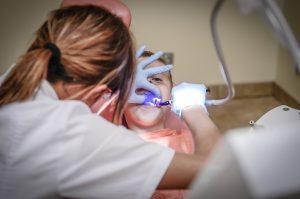In a healthy mouth, the crown is part of the tooth that is visible. And the one gums cover is the root. At some point, when a tooth’s surface breaks, chips, or cracks, a fake dental crown is used to stop further harm.
Dental crowns can be the metal caps made of gold, silver, or tooth color that fits over harmed teeth to reestablish their regular function, shape, and look. They may even comprise ceramic, porcelain, or composite to match the tooth color.
Most commonly, the need for a Dental crown is after root canal therapy. Or even after Dental implant placement.
Dental Crowns are Tailor-made in a way that they accommodate in between the adjacent teeth by the Dental-Technicians.
Dentists consider some factors play a vital role in providing the Ideal Alternative; They are: 
The function and position of tooth
The gum tissue coverage and gum line
The tooth surface exposure on smiling
The adjacent teeth-shades and color
Any habits, like night grinding or clenching, may determine the choice of material.
When is a Dental Crown Needed?
Most commonly, the use of dental crowns is in restoring:
Weaker teeth — the teeth with extensive decay that can no more take the chewing loads; A crown can protect it.
Crack tooth — Tooth with a cracked line secondary to hit or blow. A crown can hold the teeth together, even look and function as natural.
Worn-out teeth — crowns reestablish the shape and size of the seriously worn teeth seen because of bruxism.
Huge fillings — crowns cover and reinforce teeth with Large fillings that have small leftover tooth structures.
Discolored tooth — if teeth are seriously stained, the crowns cover the stained tooth. Alternatives can be Veneers and Teeth whitening.
Crowns even play a prime role in dental prosthesis, invasive dental therapies like Root canals, dental bridges, and dental implants.
Dental Crowns: Types
We can categorize the dental crowns in five types:
Porcelain-fused-to-metal Crowns:
The most widely used material for crowns and bridges is a combination of porcelain and metal. To make it, both undergo heating that results in the porcelain interacting with the oxides on the metal, which makes a long-lasting bond.
When compared to regular porcelain crowns, they are stronger because of the underlying metal structure. They additionally get along with adjacent teeth in terms of shape, color, and function.
Metal Crowns and Gold Alloys.
Metal crowns are of varying colors and constituents. They provide strength, are fracture-resistant, and protect the underlying tooth structure. Often, made of alloys gold, copper, cobalt, chromium, nickel, etc.
Crowns require the grinding of tooth structure before the placement. Metal-based crowns require minimal grinding, making them a more preferred choice to conserve the tooth.
Stainless-Steel Crowns (SSCs)
More commonly used in kids, after pulpotomy, or when there are high failure chances with fillings.
Porcelain crowns
Individuals prefer all-ceramic crowns or porcelain crowns as they are aesthetic. In dentistry, porcelains’ use is to match the front teeth color, Shapes, and contours and mimic the natural.
Ceramics with higher strength and tooth matching shades known as zirconia are significant in covering a back tooth.
A highly aesthetic alternative for front teeth is lithium disilicate, commonly known as E-max crowns. However, some dentists opine that their strength is a concern.
All-Resin Crowns
The All-resin crowns are more affordable than metal, ceramic, gold, and porcelain crowns. However, dentists don’t prefer them because of their vulnerability to fracture, higher wear and tear, and less durability.
All-resin crowns are more delicate compared to other dental restoring alternatives. So dentists prefer their use in kids’ teeth rather than in adults.
Dental Crowns: Procedure
Dentists put a crown after root canal treatment and dental implant placement. Often it takes one day to complete the procedure. Clinical stages in making crowns are in the following order;
First Visit — X-Ray, Tooth Preparation, and Temporary Crown fixing
Initially, the dentist gets the tooth X-ray. Follows it by the tooth reshaping to a size that can accommodate a crown. The amount of tooth reduced depends on the type of Crowns. Since metal crowns are thinner, they require a minimal amount of tooth reduction.
Once the trimming is over, they take tooth measurements and send them to the dental laboratory for crown fabrication.
The dentist glues a temporary crown over the trimmed tooth using the dental cement for Crowns. He recalls the patient a week later for permanent crown placement.
Second Visit — Fixing Permanent Crown
On the second visit, the dentist uses stronger dental glue for crown fixing. While gluing the permanent Crowns, he ensures the shade and fit is proper. Finally, adjust the bite as per need.
Many clinics now have CAD/CAM machines to make same-day crowns, eliminating the subsequent visits.
You may need local anesthesia while trimming the crown. It reduces the discomfort arising because of preparing a tooth for the crown. Local anesthesia reduces dental crown procedure pain.
Dental Crowns- Aftercare
Aftercare tips include:
Pain management:
As part of the aftercare, the dentist may prescribe painkiller medications to cover any pain because of injury to the gum. You can expect slight discomfort lasting anywhere from 3 to 10 days unless complete healing occurs. Visiting the dentist is valuable if the pain is more or for extended times.
Food restrictions:
In the transition period, a temporary crown plays a pivotal role, and proper care to avoid dislodging or breaking it is essential.
You should avoid:
Sticky or chewy foods like- Gums and candies.
Hard foods like- nuts, chips, bagels, etc.
On Permanent crown placement, it’s best to avoid chewing on the same side for at least 24 hrs.
Dental Crowns- Problems
Decay Underneath:
Bacterial buildup takes place in the far-reaching areas of the mouth. Sometimes they get into the spaces between the crown and tooth. Improper oral hygiene can lead to decay expanding underneath the crown, leading to a broken tooth.
Loose crowns:
Loss of the cement that glues the crown to the tooth can lead to its dislodgement, which they can glue back.
Discoloration of gums:
Most individuals choose porcelain fused to metal crowns; they have a metal substructure. In aesthetic areas, if the gum recedes, this metal substructure is visible and looks ugly. You can discuss the options for correcting it with your dentist.
Tooth hypersensitivity:
Sometimes, when they place crowns without performing intentional root canal treatment; You can observe sensitive teeth. As a temporary solution, Desensitizing toothpaste is of great use.
Chipped Crown:
Again, in cases of porcelain fused metal crowns, the porcelain may chip off. It is one of the most common disadvantages of such dental crowns.
Undergoing MRI:
There lies a limited risk of crown dislodgement while undergoing MRI scanning; It’s always better to get the status of crowns checked prior.
Dental Crowns- Cost
The cost of a dental crown varies depending on the use of materials, the technology of manufacturing the crown, skills of the dentist, and Dental technician.
Conclusion:
Using Dental crowns is increasing with time. Better materials and the latest technology are changing the dynamics. Discuss the options available and get the most suitable dental crown your dentist suggests.

